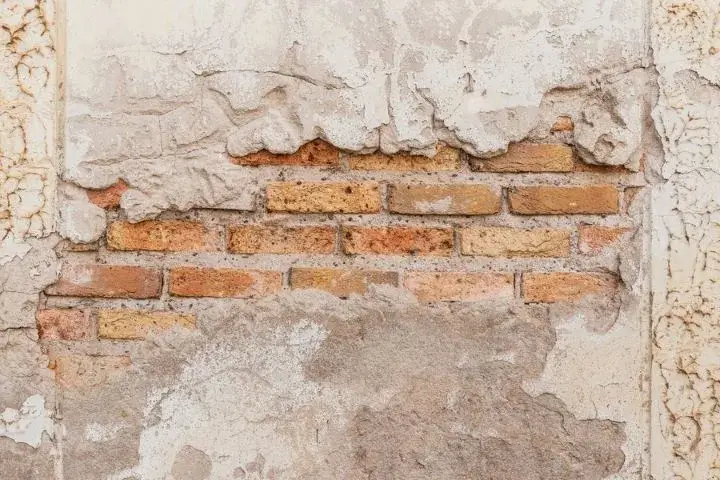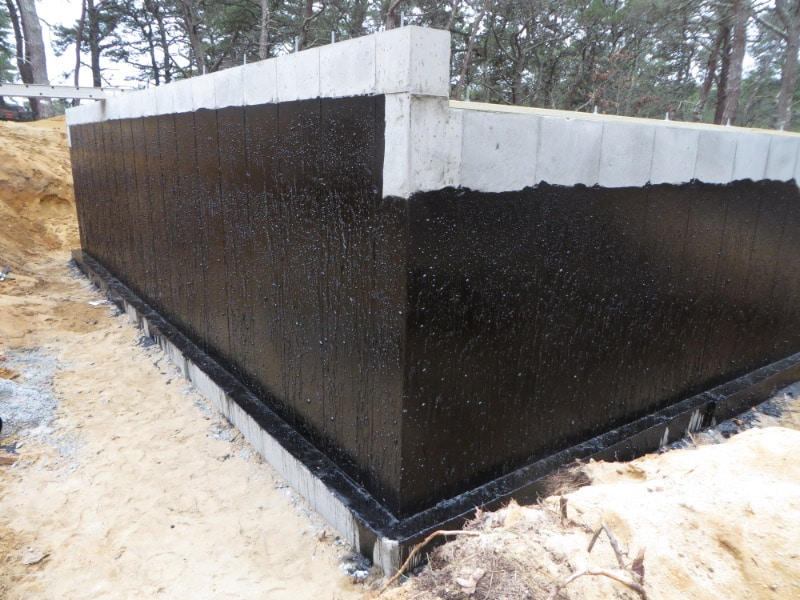Understanding the Value of Damp Proofing in Stopping Structural Damage
Damp proofing functions as a necessary protection versus wetness seepage in buildings. This safety step can prevent considerable structural damage, yet several residential property owners stay uninformed of its significance. Recognizing the signs of wetness and understanding the different options offered can be vital. However, neglecting moist proofing can lead to serious consequences. What are the details dangers and options that home proprietors should consider?
What Is Damp Proofing and How Does It Function?
Moist proofing serves as a crucial obstacle against wetness breach in buildings. mould removal newcastle. This process involves applying details materials and methods to stop water from permeating walls, floorings, and various other architectural components. Commonly, wet proofing can be achieved with the installation of damp evidence membranes, finishings, or using specialized sealants.These methods function by producing a safety layer that inhibits moisture movement, ensuring that the interior atmosphere remains completely dry and healthy and balanced. Wet proofing is particularly crucial in locations susceptible to high moisture or groundwater, as it aids preserve the integrity of the framework over time.Moreover, efficient wet proofing adds to energy performance by preventing warmth loss linked with moist settings. By attending to possible moisture issues prior to they intensify, damp proofing functions as an aggressive measure in protecting buildings from the detrimental impacts of water damages, eventually prolonging their life expectancy and maintaining their value
Common Indications of Wetness in a Building
Moisture concerns within a structure can materialize via a number of recognizable indications that indicate the presence of moisture. One prominent indication is the look of water stains on ceilings or walls, which typically shows moisture infiltration. In addition, peeling or bubbling paint can recommend that excess moisture is entraped below the surface, resulting in damage. Another usual indication is the presence of mold and mold, which grow in damp conditions and can commonly be determined by their moldy smell. Additionally, an increase in humidity levels can create condensation on windows and other surface areas, highlighting moisture problems. Finally, unequal or deformed flooring may indicate underlying dampness that compromises structural honesty. Recognizing these signs early can help minimize prospective damage and preserve a risk-free living atmosphere. Normal inspections and prompt action are crucial in dealing with wetness concerns prior to they rise.
The Risks of Overlooking Damp Proofing
Disregarding damp proofing can cause significant threats to a building's architectural stability, as dampness build-up might compromise walls and structures. Furthermore, prolonged wetness develops an environment conducive to mold development, posing severe wellness threats to residents. Dealing with these threats is vital for ensuring both safety and long life of the property.
Architectural Stability Threats
They subject their homes to substantial structural stability hazards when property owners forget the relevance of reliable moist proofing. Prolonged dampness seepage can bring about the development of mold and mildew, which damages fundamental components and can compromise overall stability. In addition, excess moisture can erode concrete and brickwork, leading to splits and architectural failures. Timber components are especially at risk; they can rot and shed load-bearing capacity, posturing significant risks to the building's framework. Neglected moist conditions might draw in parasites, such as termites, which further exacerbate architectural degeneration. Ultimately, neglecting moist proofing actions can cause expensive repair services and potential safety hazards, emphasizing the important function of positive moist monitoring in protecting the integrity of homes.
Carcinogen Worries
Just how can a relatively minor oversight bring about significant wellness threats? Overlooking moist proofing can produce a setting favorable to mold and mildew development, which positions considerable health and wellness dangers. Mold and mildew spores can activate sensitive reactions, breathing issues, and other wellness issues, especially in prone populaces such as kids, the senior, and people with pre-existing conditions. Furthermore, consistent wetness can bring in parasites like pests and rodents, which bring illness that additionally endanger wellness. The existence of moisture additionally adds to a decrease in indoor air top quality, aggravating asthma and various other respiratory system conditions. Consequently, the failing to address damp problems not only threatens structural stability however additionally threatens the wellness of owners, highlighting the vital requirement for reliable moist proofing steps.
Various Kinds Of Damp Proofing Solutions
Numerous aspects can add to damp concerns in structures, selecting the ideal damp proofing option is crucial for protecting architectural integrity. Several alternatives are available, each customized to particular conditions.One common remedy is a damp-proof membrane layer (DPM), generally made from polyethylene or bitumen, which is set up in wall surfaces and floorings to avoid dampness access. Another alternative is damp-proof training courses (DPC), which are layers of waterproof material placed within walls to obstruct increasing damp.Chemical damp proofing involves infusing waterproofing chemicals into walls to produce an obstacle versus wetness. Additionally, exterior therapies such as tanking, which includes using a waterproof layer to the exterior of foundations, can be efficient in stopping water penetration.Each remedy has its benefits and is selected based on the building's specific issues, environmental problems, and long-lasting upkeep considerations, ensuring excellent security against damp-related damages.

The Expense of Damp Damage vs. Prevention
Comprehending the financial effects of wet damages compared to prevention highlights the significance of proactive steps. The prices linked with damp damages can be substantial, consisting of repairs to architectural components, mold and mildew removal, and potential health-related expenditures. Home owners might face significant financial pressure if substantial damages happens, leading to raised insurance costs and lost building value.In contrast, spending in wet proofing solutions is generally much more affordable. First costs for prevention methods, such as enhancing or installing damp-proof membrane layers drain systems, are commonly exceeded by the long-lasting financial savings from avoiding costly repair work. Additionally, preventing damp issues can enhance a residential or commercial property's total worth and charm, making it a smart financial investment. When examining the expense of damp damages versus avoidance, it ends up being clear that taking aggressive steps can protect financial interests and maintain the stability of the property with time.
Selecting the Right Damp Proofing Technique for Your Home
Which moist proofing approach is most suitable for a particular residential property usually relies on numerous aspects, including the building's age, existing moisture issues, and regional environmental problems. For older structures, standard techniques such as bitumen membrane layers or cementitious layers might be a lot more effective, as they can supply a robust obstacle against climbing wet. In contrast, newer structures may gain from contemporary options like injected damp-proof courses, which are much less invasive and can be tailored to particular dampness challenges.Additionally, buildings in locations with high water tables or heavy rains might require advanced techniques, such as cavity wall drainage systems or external waterproofing. House owners must also take into consideration the details products used in their building's building and construction, as some techniques might not work. Inevitably, a detailed analysis by an expert can lead homeowner in choosing the most effective wet proofing approach tailored to their one-of-a-kind scenarios.
Keeping Your Damp Proofing System In Time
Normal upkeep of a moist proofing system is crucial for ensuring its lasting performance and shielding a home from moisture-related damages. Property owners need to carry out regular inspections to determine any kind of indicators of wear or concession in the moist proofing layer. This includes monitoring for fractures, peeling paint, or mold growth, which might suggest dampness intrusion.Additionally, it is a good idea to tidy seamless gutters and downspouts frequently to stop water buildup around the foundation. If wear and tear is observed.Engaging specialist services for routine assessments can further improve the toughness of the system, reapplying membrane layers or sealants may be necessary. These professionals can supply understandings into possible vulnerabilities and recommend prompt repairs.
Frequently Asked Inquiries
How Much Time Does Damp Proofing Therapy Last Prior To Requiring Repairs?
The durability of moist proofing treatment usually varies from 10 to thirty years, depending on variables such as the technique used, ecological problems, and maintenance techniques. Routine examinations can help figure out when fixings might be essential.
Is Do It Yourself Damp Proofing Effective Contrasted to Expert Solutions?
The effectiveness of do it yourself moist proofing differs considerably. mould treatment newcastle. While some people may attain satisfying results, expert solutions commonly ensure detailed solutions, leveraging experience and high quality products to avoid future concerns a lot more accurately than most do it yourself attempts
Can Damp Proofing Improve Indoor Air Quality?
The question of whether wet proofing can boost interior air quality occurs frequently. Efficient moist proofing reduces moisture degrees, thereby lessening mold growth and irritants, ultimately adding to mould removal newcastle a healthier interior environment for owners.
Exist Specific Rules for Damp Proofing in Various Areas?
Regulations for damp proofing differ by area, commonly affected by neighborhood structure codes and ecological problems. Compliance warranties effective moisture control, advertising and protecting frameworks safety, which highlights the need for adherence to these details regulations.

What Are the Long-Term Conveniences of Appropriate Damp Proofing?
The lasting advantages of correct damp proofing consist of enhanced structural stability, minimized maintenance expenses, improved interior air top quality, and enhanced building value. These advantages contribute to a healthier living atmosphere and long term life expectancy of buildings. Commonly, moist proofing can be attained with the installment of wet evidence membranes, layers, or the use of specialized sealants.These techniques work by developing a protective layer that inhibits dampness movement, ensuring that the interior environment remains healthy and dry. Moist proofing is especially vital in areas vulnerable to high humidity or groundwater, as it aids keep the stability of the framework over time.Moreover, efficient moist proofing contributes to energy efficiency by preventing warmth loss linked with wet settings. Overlooking wet proofing can lead to significant risks to a building's structural honesty, as dampness accumulation might compromise foundations and wall surfaces (damp removal newcastle). Numerous elements can contribute to damp concerns in structures, selecting the appropriate wet proofing service is crucial for preserving structural integrity. Which moist proofing technique is most appropriate for a certain building often depends on different elements, including the structure's age, existing wetness concerns, and regional environmental problems